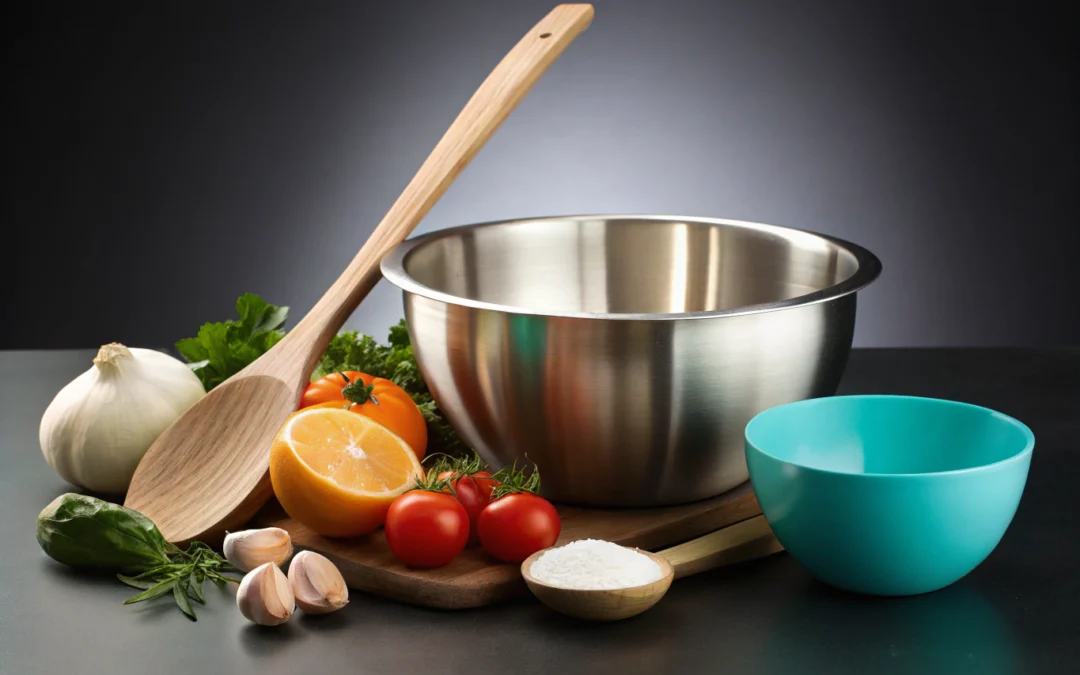The Art of Mixing: How a Simple Tool Transforms Kitchen Creativity
In the realm of culinary tools, the mixing spoon stands out as an understated yet essential instrument. Its humble design belies its versatility, serving as both a gentle stirrer and a sturdy scraper. Whether you’re folding delicate egg whites or combining hearty batters, the right mixing spoon can influence the texture and outcome of your cooking or baking. Understanding its role and how to select the right one can elevate everyday kitchen routines into moments of creative expression.
Design and Material: The Foundation of Functionality
Material Matters
Mixing spoons come in a variety of materials, each offering distinct advantages. Wooden spoons, for example, are gentle on non-stick surfaces and provide a comfortable grip. Their natural warmth makes them suitable for stirring hot mixtures without conducting heat. Silicone spoons are heat-resistant, flexible, and easy to clean, making them popular for a range of culinary tasks. Metal spoons, often stainless steel, are durable and excellent for stirring thick or dense ingredients. The choice of material impacts not only the lifespan of the spoon but also how it interacts with your cookware and ingredients.
Shape and Size
Beyond materials, the shape and size of a mixing spoon influence its utility. A wider, flatter bowl allows for more effective scraping and mixing, reducing the need for additional utensils. Smaller spoons are ideal for precision tasks like incorporating spices or small quantities of ingredients, while larger ones facilitate mixing larger batches. The handle length also plays a role, offering leverage and control, especially when dealing with heavy mixtures or hot contents.
Functionality in Action
Versatility in the Kitchen
The beauty of a well-chosen mixing spoon lies in its adaptability. It can gently fold whipped cream into a batter, scrape the sides of a bowl to ensure even mixing, or stir sauces on the stove. Its design minimizes the risk of damaging delicate ingredients, while its sturdy construction withstands vigorous stirring. This multi-functionality makes it an indispensable tool that simplifies cooking processes and fosters experimentation.
Care and Maintenance
Proper care extends the life of your mixing spoon. Wooden spoons should be hand-washed and occasionally treated with mineral oil to prevent cracking. Silicone and metal spoons are generally dishwasher safe, but it’s wise to check manufacturer instructions. Regular cleaning and appropriate storage help maintain their appearance and functionality, ensuring they remain a trusted part of your culinary toolkit for years to come.
Selecting the Right Mixing Spoon for Your Kitchen
Assess Your Needs
Consider the types of dishes you prepare most frequently. If you bake often, a silicone spoon with a flexible head can be invaluable for folding and scraping. For stove-top cooking involving heavy sauces or stews, a sturdy stainless steel spoon offers durability. For gentle mixing or serving, a wooden spoon provides comfort and a classic aesthetic.
Prioritize Comfort and Ergonomics
Since you’ll likely use your mixing spoon repeatedly, choose one with an ergonomic handle that fits comfortably in your hand. A well-designed handle reduces fatigue and allows for precise control, making your cooking experience more enjoyable.
Consumer Recommendations
- Invest in multiple materials: Keep a silicone spoon for heat resistance and delicate tasks, a wooden spoon for stirring and serving, and a metal spoon for heavy-duty mixing.
- Opt for high-quality construction: Durable materials and well-crafted handles ensure longevity and safety during use.
- Maintain your tools: Regular cleaning and appropriate storage will keep your mixing spoons in top condition, ready for your next culinary creation.
Checkout ProductScope AI’s Studio (and get 200 free studio credits)

